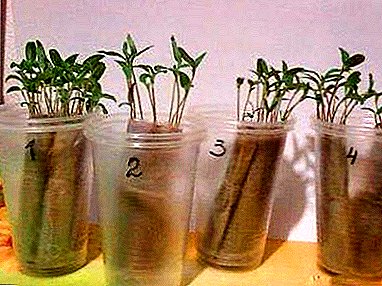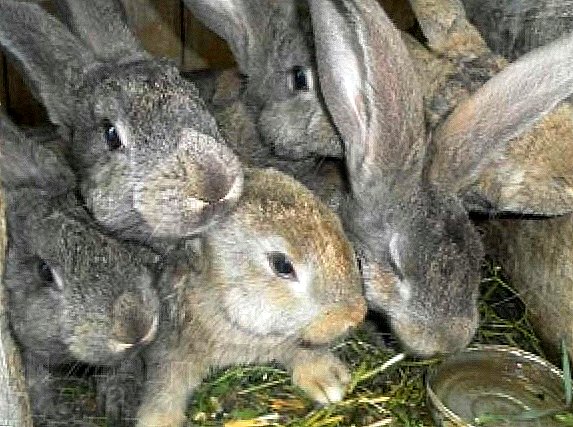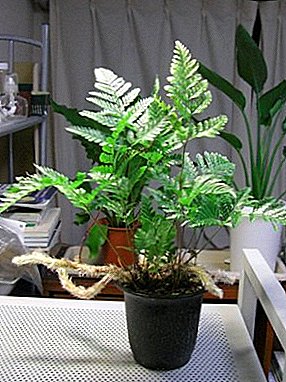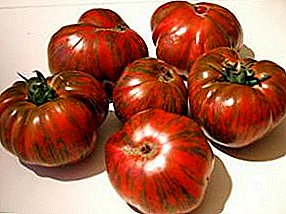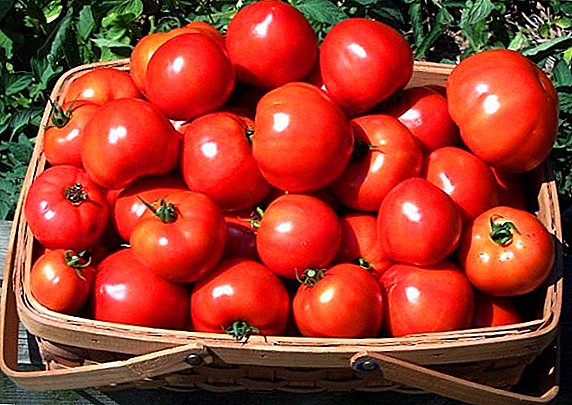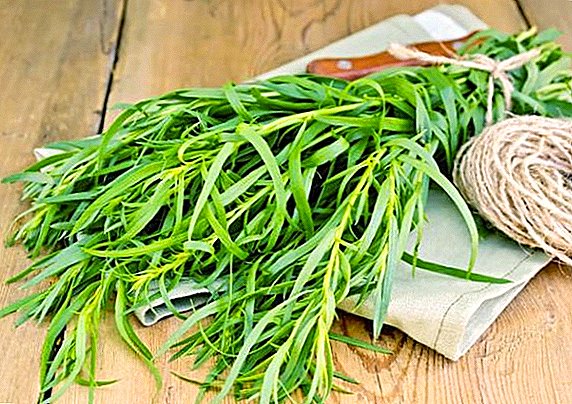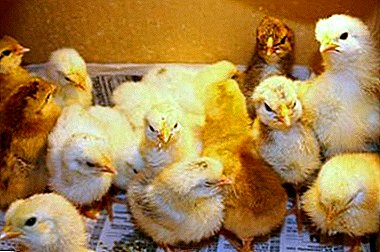
Growing chickens at home is a complex and responsible business. Juvenile chickens are very capricious in terms of maintenance and require increased attention.
It is necessary not only to organize food and care properly, but also to take care of equipping the room, observing temperature conditions and preventing diseases.
How to choose?
 When choosing chickens for growing at home, it is necessary to take into account age and sexual characteristics. In addition, the selection of young stock is carried out by external signs.
When choosing chickens for growing at home, it is necessary to take into account age and sexual characteristics. In addition, the selection of young stock is carried out by external signs.
If chicks are healthy:
- they have a tucked up belly;
- umbilical cord;
- no bleeding marks;
- fluff shiny and smooth.
Age
The optimal age for purchasing chicks is 20 days. Growing healthy chickens at home, from this age is not difficult, they are no longer dependent on the hen, able to feed themselves and find their own food.
Rooster or chicken?
It is necessary to choose here taking into account for what purposes the farmer is going to raise chicks. If for the sake of eggs, then it is worth choosing carrier breeds of chickens. For the meat is suitable, as a rooster, and chicken. Besides, rooster is needed to increase laying egg production.
Content preparation
In cages
How to grow healthy chickens at home? When keeping chickens in cages, the following conditions must be met:
- dry and clean;
- maintaining the required temperature and humidity;
- well-chosen mode of lighting and ventilation.
 The bird house must be disinfected beforehand, lay a dry loose litter on the floor, check for protection against rodents. The last thing to complete the cage is all necessary to maintain the life of chicks. This should include not only lamps, but also heating equipment, feeders, drinkers. On 1 m2 occupy 12 chicks.
The bird house must be disinfected beforehand, lay a dry loose litter on the floor, check for protection against rodents. The last thing to complete the cage is all necessary to maintain the life of chicks. This should include not only lamps, but also heating equipment, feeders, drinkers. On 1 m2 occupy 12 chicks.
The first days of the laying hens, when grown at home, suffer from hypothermia or excessive heat. Just before the age of one month their body has not had time to adapt to changes in external conditions.
Attention! The farmer should closely monitor the temperature and humidity. If it is cold in the room, then install additional heating devices, if it is hot, then air regularly.
On the litter
Chickens are kept on a deep non-replaceable bedding.. Thanks to it, a large amount of thermal energy is released. This protects the limbs of chicks from exposure to low temperatures, and has a positive effect on their general condition and health. Due to the permanent decomposition, which occurs in the litter under the influence of bacteria, chickens receive an auxiliary source of biologically active substances.
If you properly care for the litter, it will not stick together in clumps. For litter most often choose the following materials:
- peat;
- straw chopping;
- wood chips;
- sawdust.
Feeding
In the first 10 days, chicks should be fed at intervals of 2 hours.. At this time, the basis of the food should be such a mixture: finely chopped, hard-boiled eggs, crumbly cottage cheese, semolina or corn grits. For 10 individuals, 50 g of cottage cheese, 50 g of cereal and 1 egg will go away.
 It is useful to introduce into the diet a mixture consisting of such products:
It is useful to introduce into the diet a mixture consisting of such products:
- lightly ground oatmeal;
- chicken feed;
- dry milk (1/4 part of the volume of cereals and 1 tablet of multivitamins, crushed into powder).
This dry mix is convenient in that chickens can adjust feed intake themselves.
From 3 to 5 days you can reproach chicks with finely chopped greens. From 5th to 7th day of life, loose mash on kefir, fish and meat broths are allowed.
From 10th day such products are allowed.:
- boiled potatoes;
- grated carrots;
- pumpkin;
- zucchini.
During this period, it is useful to introduce into the diet finely crushed chalk, egg shells, previously boiled. Separate gravel in separate feeders.
Use of feed
Using high-quality feed, you can saturate the body of chicks with useful vitamins. It is best to use chopped cereal feed. Bring in feed into the diet of poultry according to the following scheme:
- Up to 10 days for chicks to feed in feed step by step - from 10 g per day. Over time, gradually increase the dosage to 35 g.
- When the chicks were 10 days old, the rate gradually increased to 170 g per individual per day.
Features
Home Care for Laying Chicks
Yaytsenosky breeds of chickens grow rapidly and often carry eggs. In the first days in the diet to make the following products:
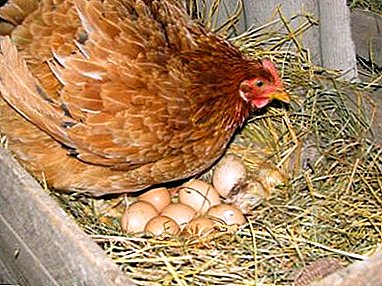 millet;
millet;- semolina;
- crushed corn;
- chopped boiled eggs.
From 1.5 months chicks can be transferred to "adult" feed. These include:
- cereals;
- feed;
- food waste;
- boiled potatoes;
- alfalfa;
- clover;
- green bean.
The water in the drinkers of the chickens should always be clean and fresh. So that the chickens do not get wet and do not climb into the container, it is worth turning a 0.5 liter jar of water. This will provide a gradual moderate drink. For the prevention of disease, chicks once every 7 days should be given a slightly pink solution of potassium permanganate (10 ml per 1 l of water).
You can add pounded antibiotic pills to food. Yaytsenosky breeds of chickens to feed 4 times a day. If the weather is warm outside, then they equip a place for walking. It is necessary to keep adult chickens in sheds with equipped perches (90-110 cm from the floor) and nests (1 nest for 4 individuals).
The room should be free from drafts and inaccessible to rodents. Around the hen house set trough and drinkers.
Attention! For the device nests you can use wooden boxes from under the vegetables or fruits. Put straw and large sawdust on the bottom.
Daily chickens
How to grow daily chickens? It is most difficult to care for such chicks, as they are most vulnerable to diseases. For day-old chicks, the following conditions must be observed.:
- required temperature conditions;
- optimum air humidity;
- mode of lighting and ventilation;
- balanced diet and nutritional dosage.
Already dried chickens can be transferred to a brooder. To create a comfortable living environment you need to provide indoors:
- dryness and purity;
- compliance with the required temperature and humidity conditions;
- correctly choose the mode of lighting and ventilation.
Lohman Brown
 This breed of chickens is distinguished by its unpretentiousness. They quickly adapt to new conditions and are able to maintain high productivity even in harsh conditions. Keep these chickens can be indoors or on the run.
This breed of chickens is distinguished by its unpretentiousness. They quickly adapt to new conditions and are able to maintain high productivity even in harsh conditions. Keep these chickens can be indoors or on the run.
In the barn you need to ensure the availability of drinkers, feeders, bedding. No drafts. In winter, to extend the daylight use additional lighting. For laying hens it is necessary to use balanced feed. They must contain a large amount of vitamins, minerals, proteins, carbohydrates. On one individual enough 115 g of dry food per day.
Important! Exceeding the diet is not worth it, otherwise it will lead to obesity.
How to grow using an incubator?
Breeding for beginners
How to ensure the proper breeding of chickens in the incubator beginner? Before laying eggs in the incubator, it is necessary to adjust the required temperature readings. For the 1st week of incubation, the values of 38.5-39 degrees remain optimal. You need to use an egg no older than 3 days. Laid eggs in pencil cancel (on the one hand - a dash, and on the other - a cross).
After the bookmark, they will warm up for a day, and then they can be turned over. On the 19th day of incubation, the process is nakleva. At this time, stop turning the eggs and lower the temperature to 37.5 degrees. On the 20th day, a mass hatching of chicks is performed, and on the 22nd day, it ends. Further incubate the egg is not worth it.
After the incubator
After the incubator, when growing chickens at home, chicks can be kept for the first 1-2 weeks in boxes. But for full development requires much more space. The temperature in the first week should be 30-33 degreesand in a month it drops to 20-22 degrees.
Be sure to provide chicks with full watering. Change the water in the drinkers 2 times a day. The composition of the grain mixture is as follows:
- Wheat and corn - by 35%.
- Oats - 10%.
- Barley - 20%.
As the first feed, the chickens after the incubator must be given a boiled egg - 1 piece for 30 individuals.
Frequent mistakes
Farmers can make the following mistakes when raising chicks.:
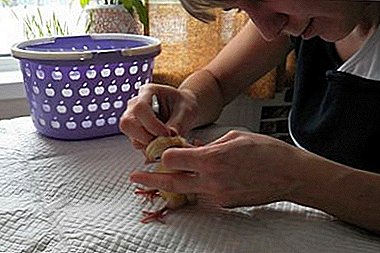 Improper feeding and grooming of domestic chickens in the first week. Often farmers use boiled egg, greens, cottage cheese for feeding. But such food is sometimes tragic. It is best to use balanced and combined feed.
Improper feeding and grooming of domestic chickens in the first week. Often farmers use boiled egg, greens, cottage cheese for feeding. But such food is sometimes tragic. It is best to use balanced and combined feed.- Not compliance with the temperature. Initially, the temperature should be 32-33 degrees. And then every day to lower it by 1 degrees.
- Lack of fluid. In the drinkers should always be fresh and clean water.
- Refusal to prevent. In addition to vaccination, it is necessary to feed chicks to antibiotic feed.
Despite the fact that it is difficult to grow chickens at home, even a novice farmer can handle it. To do this, he just needs to adhere to the above rules and treat this process responsibly.


 millet;
millet; Improper feeding and grooming of domestic chickens in the first week. Often farmers use boiled egg, greens, cottage cheese for feeding. But such food is sometimes tragic. It is best to use balanced and combined feed.
Improper feeding and grooming of domestic chickens in the first week. Often farmers use boiled egg, greens, cottage cheese for feeding. But such food is sometimes tragic. It is best to use balanced and combined feed.